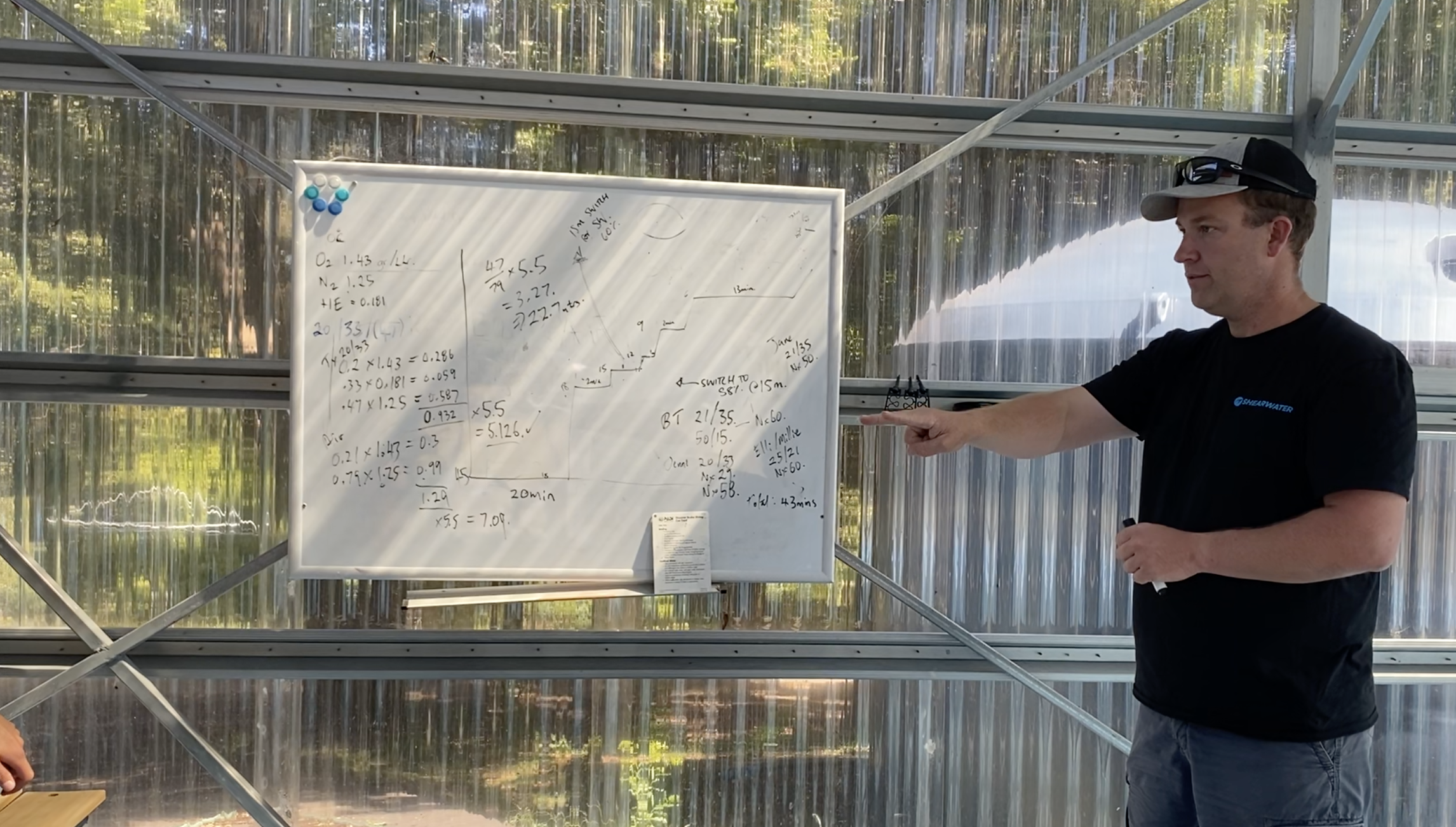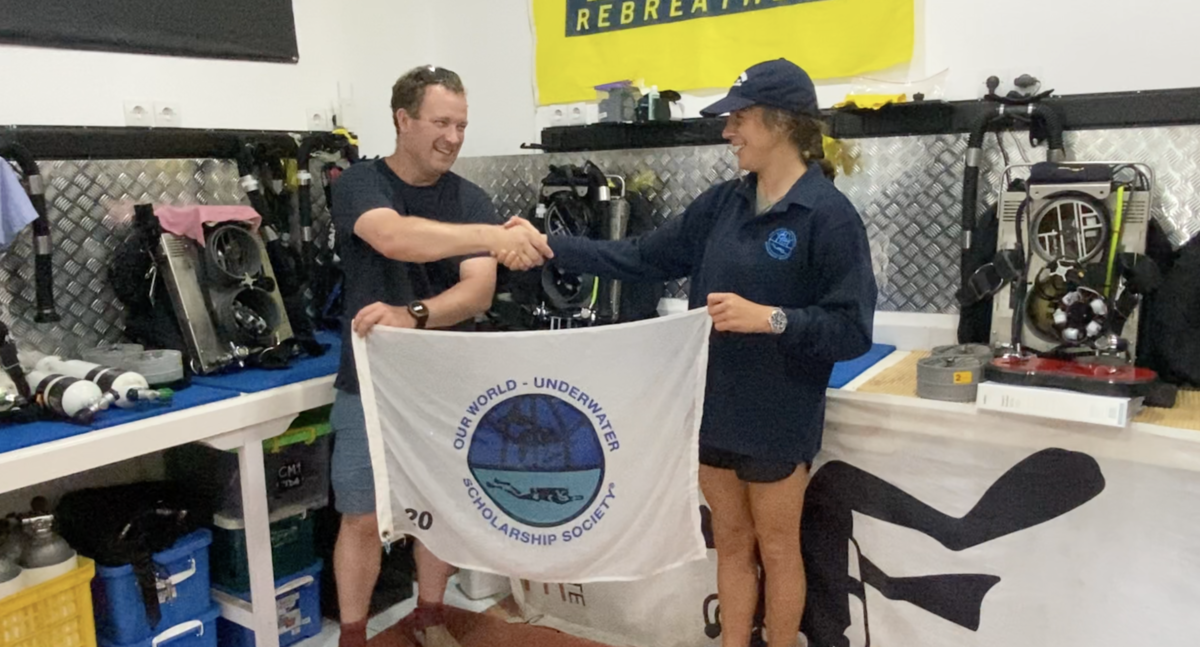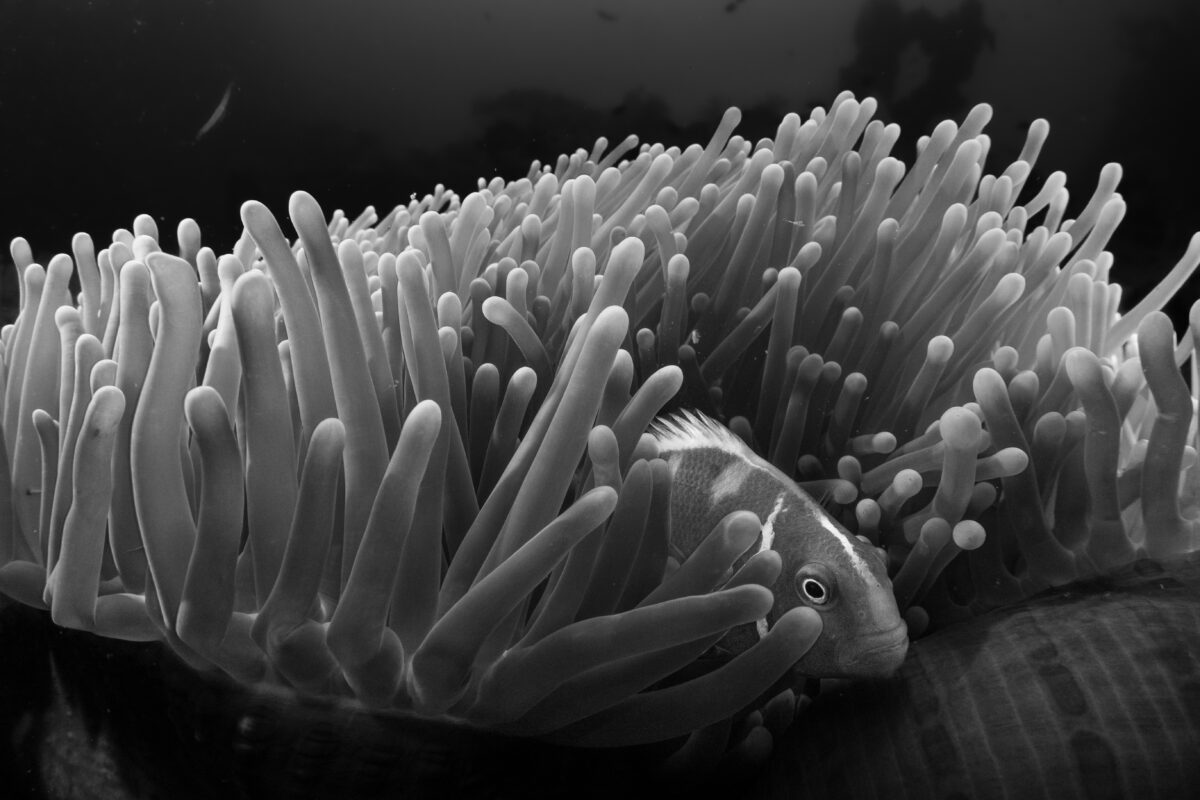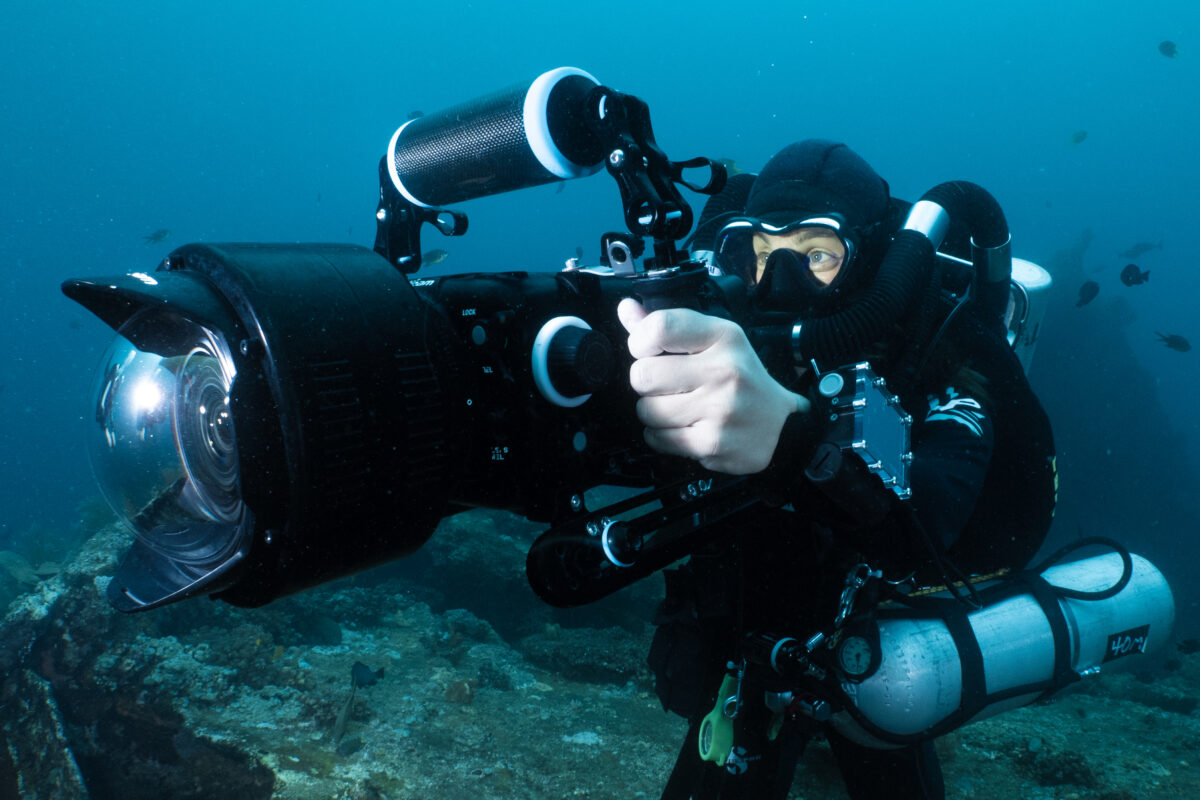Written by Millie Mannering

Diving is a fantastic tool for the exploration of our oceans. But to develop my diving capacity, I needed to increase the depth and duration of my dives. I pursued training in technical diving disciplines to further my skillset and capacity underwater for research and communication. I loved the challenge of learning new skills, diving with different equipment configurations and learning about gas blending.
Millie Mannering preparing for a trimix decompression dive on sidemount configuration. Photo: Warren Bates

Founder of Scuba Diving Tasmania, Brad Turner, explaining our gas mix calculations when planning our trimix decompression dives. Photo: Millie Mannering
Brad Turner, founder of Scuba Diving Tasmania, introduced me to the world of technical diving. After joining Brad in Tasmania, we focused on the theory behind conducting mixed gas dives and learning about the safety, support and communication needed to conduct technical dives. I enjoyed learning about how to mix gases and prepare equipment, different equipment set-ups and developing my understanding of the application of this new category of diving.




Top: Training for bail-out scenarios and getting comfortable with my trim and buoyancy! Bottom: Celebrating with Brad Turner on completion of my certification and enjoying my first dive post-certification. Photos L-R: Brad Turner, Millie Mannering, Kyle Roepke
Next, I was very excited to travel with Brad to Indonesia for my introduction to the world of rebreather diving! Requiring a comprehensive understanding of diving physiology and application of my knowledge and skills, I found training extremely rewarding. It was initially very strange to struggle with my buoyancy and trim underwater, but with some patience and perseverance I was able to re-adjust and competently dive on this new system!
I thoroughly enjoyed the diligent planning and preparation required to safely conduct these dives and I loved spending hours underwater. With a background in behavioural ecology, being able to document and observe marine life without any bubbles or noise was incredible!


Enjoying observing and documenting marine life through this new method of exploration. Photo: Millie Mannering, Kyle Roepke
Thank you to Brad Turner for being such a patient, kind and enthusiastic instructor! From our time together, I gained my TDI Advanced Nitrox, TDI Sidemount Diver, TDI Decompression Procedures, TDI Extended Range and Trimix, TDI Helitrox Diver and rEvo CCR Helitrox Diluent Decompressure Procedures (45m) qualifications. I am also very grateful for my course buddy, the Eloise Gill, for the entertainment and many cheeky laughs underwater!
Thank you to the Our World Underwater Scholarship Society and Rolex for making the scholarship possible. I would also like to thank my equipment sponsors Reef Photo and Video, Nauticam and Light and Motion as well as TUSA, Waterproof, Tabata Australia and Suunto.
Trip Tune: Kung Fu Fighting – Carl Douglas
Top Tip: Kangaroos can actually grow very large and they are very strong!
Join me, above and beneath the surface, on my adventures throughout the scholarship year. Subscribe to my blogs, follow along on Instagram, Facebook or flick me an email!
Follow along with my journey as next, I learn about coastal resource management …